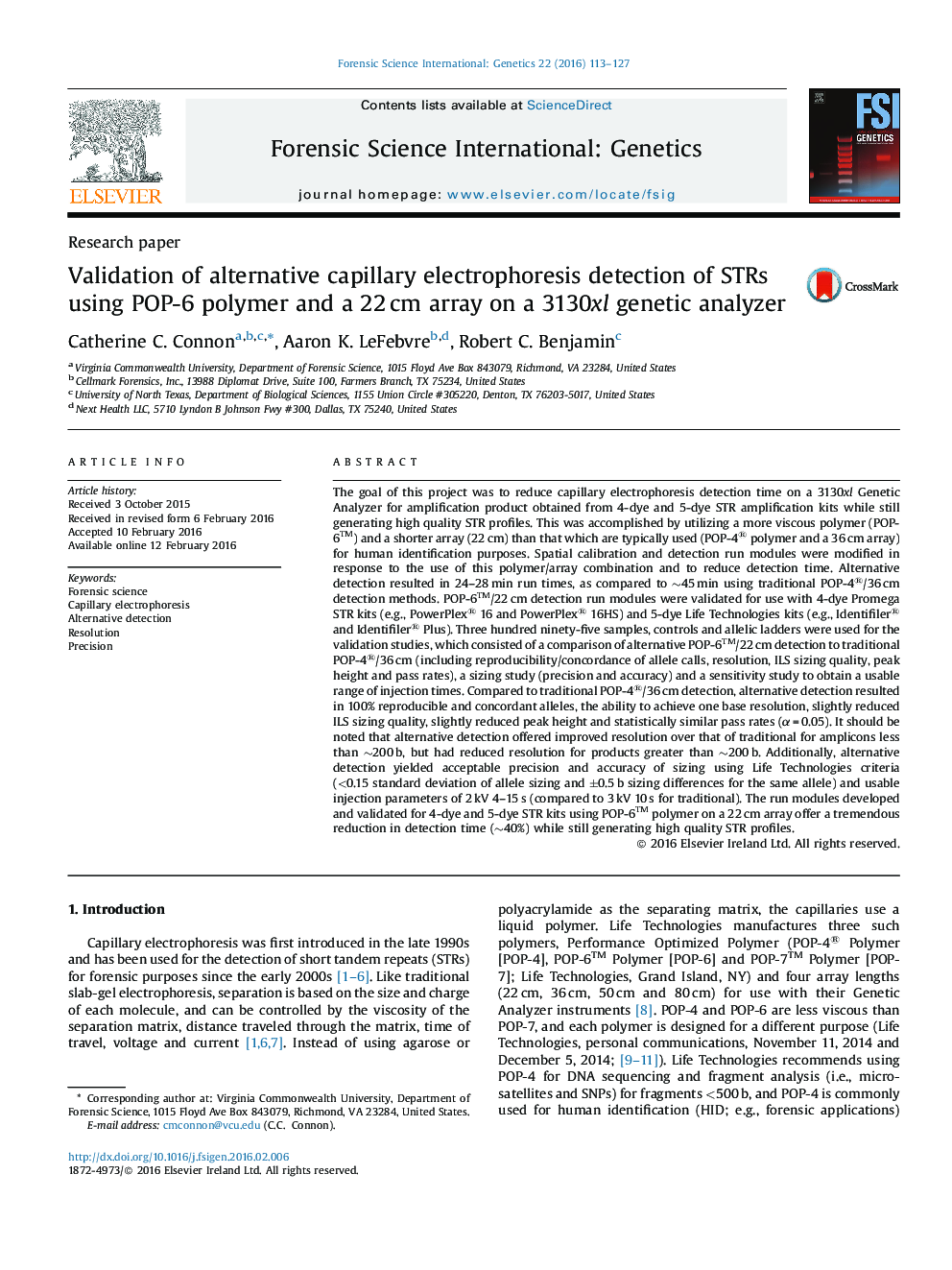| Article ID | Journal | Published Year | Pages | File Type |
|---|---|---|---|---|
| 98711 | Forensic Science International: Genetics | 2016 | 15 Pages |
•A detection method is presented that utilizes POP-6 polymer and 22 cm array.•Detection time is reduced by ∼40% and sample throughput is increased ∼67%.•Full allele concordance is achieved without panel and bin modifications.•Resolution is slightly improved for smaller sized alleles (<200 b).•One base resolution is achievable for allele sizes of up to 300 b.
The goal of this project was to reduce capillary electrophoresis detection time on a 3130xl Genetic Analyzer for amplification product obtained from 4-dye and 5-dye STR amplification kits while still generating high quality STR profiles. This was accomplished by utilizing a more viscous polymer (POP-6™) and a shorter array (22 cm) than that which are typically used (POP-4® polymer and a 36 cm array) for human identification purposes. Spatial calibration and detection run modules were modified in response to the use of this polymer/array combination and to reduce detection time. Alternative detection resulted in 24–28 min run times, as compared to ∼45 min using traditional POP-4®/36 cm detection methods. POP-6™/22 cm detection run modules were validated for use with 4-dye Promega STR kits (e.g., PowerPlex® 16 and PowerPlex® 16HS) and 5-dye Life Technologies kits (e.g., Identifiler® and Identifiler® Plus). Three hundred ninety-five samples, controls and allelic ladders were used for the validation studies, which consisted of a comparison of alternative POP-6™/22 cm detection to traditional POP‐4®/36 cm (including reproducibility/concordance of allele calls, resolution, ILS sizing quality, peak height and pass rates), a sizing study (precision and accuracy) and a sensitivity study to obtain a usable range of injection times. Compared to traditional POP-4®/36 cm detection, alternative detection resulted in 100% reproducible and concordant alleles, the ability to achieve one base resolution, slightly reduced ILS sizing quality, slightly reduced peak height and statistically similar pass rates (α = 0.05). It should be noted that alternative detection offered improved resolution over that of traditional for amplicons less than ∼200 b, but had reduced resolution for products greater than ∼200 b. Additionally, alternative detection yielded acceptable precision and accuracy of sizing using Life Technologies criteria (<0.15 standard deviation of allele sizing and ±0.5 b sizing differences for the same allele) and usable injection parameters of 2 kV 4–15 s (compared to 3 kV 10 s for traditional). The run modules developed and validated for 4-dye and 5-dye STR kits using POP‐6™ polymer on a 22 cm array offer a tremendous reduction in detection time (∼40%) while still generating high quality STR profiles.
